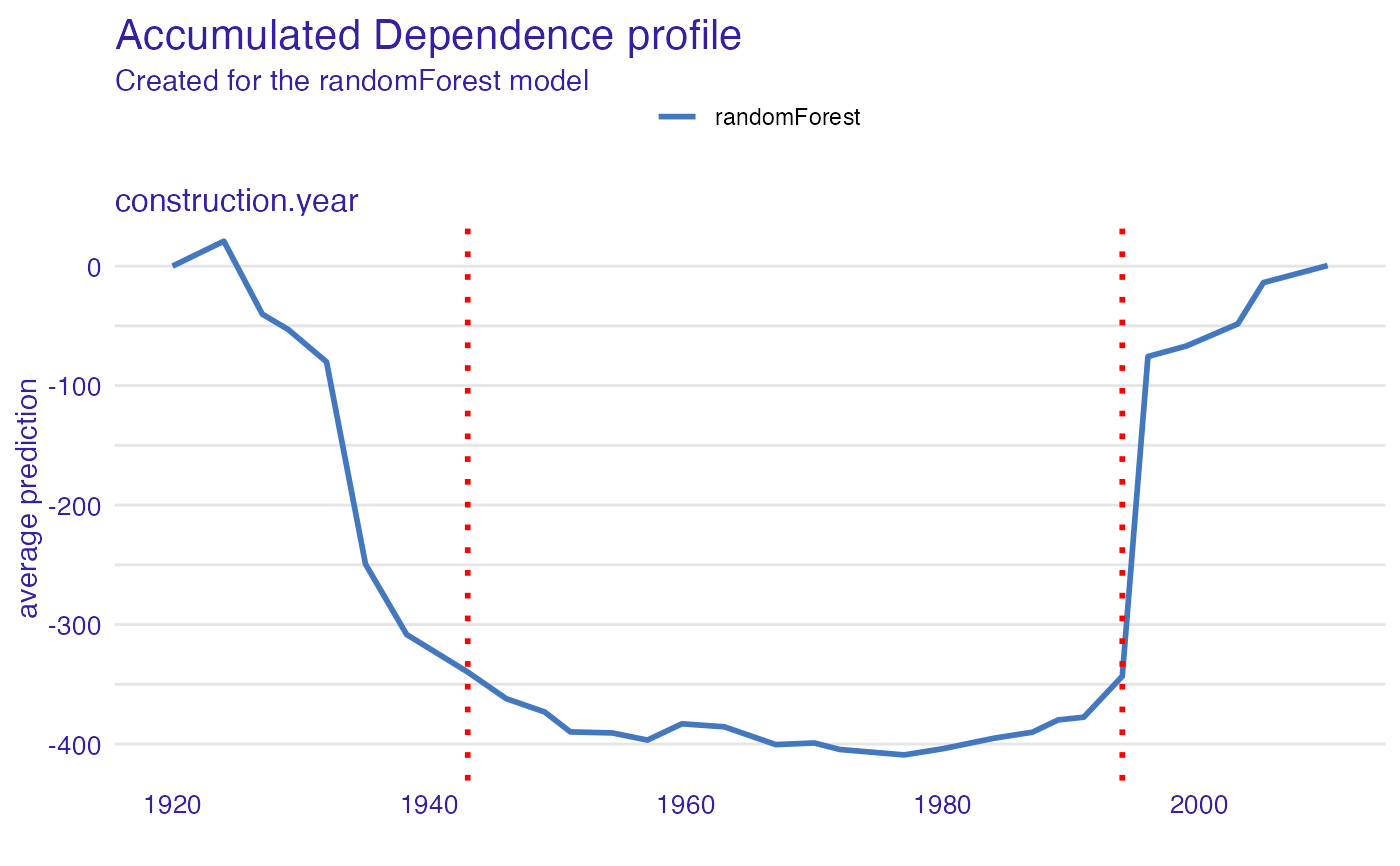Creating SAFE Extractor - an Object Used for Surrogate-Assisted Feature Extraction
Source:R/safe_extraction.R
safe_extraction.RdThe safe_extraction() function creates a SAFE-extractor object which may be used later for surrogate feature extraction.
safe_extraction(
explainer,
response_type = "ale",
grid_points = 50,
N = 200,
penalty = "MBIC",
nquantiles = 10,
no_segments = 2,
method = "complete",
B = 500,
collapse = "_",
interactions = FALSE,
inter_param = 0.25,
inter_threshold = 0.25,
verbose = TRUE
)Arguments
- explainer
DALEX explainer created with explain() function
- response_type
character, type of response to be calculated, one of: "pdp", "ale". If features are uncorrelated, one can use "pdp" type - otherwise "ale" is strongly recommended.
- grid_points
number of points on x-axis used for creating the PD/ALE plot, default 50
- N
number of observations from the dataset used for creating the PD/ALE plot, default 200
- penalty
penalty for introducing another changepoint, one of "AIC", "BIC", "SIC", "MBIC", "Hannan-Quinn" or numeric non-negative value
- nquantiles
the number of quantiles used in integral approximation
- no_segments
numeric, a number of segments variable is to be divided into in case of founding no breakpoints
- method
the agglomeration method to be used in hierarchical clustering, one of: "ward.D", "ward.D2", "single", "complete", "average", "mcquitty", "median", "centroid"
- B
number of reference datasets used to calculate gap statistics
- collapse
a character string to separate original levels while combining them to the new one
- interactions
logical, if interactions between variables are to be taken into account
- inter_param
numeric, a positive value indicating which of single observation non-additive effects are to be regarded as significant, the higher value the higher non-additive effect has to be to be taken into account
- inter_threshold
numeric, a value from
[0,1]interval indicating which interactions should be returned as significant. It corresponds to the percentage of observations for which interaction measure is greater than inter_param - if this percentage is less than inter_threshold then interaction effect is ignored.- verbose
logical, if progress bar is to be printed
Value
safe_extractor object containing information about variables transformation
See also
Examples
library(DALEX)
#> Welcome to DALEX (version: 2.4.2).
#> Find examples and detailed introduction at: http://ema.drwhy.ai/
library(randomForest)
#> randomForest 4.7-1.1
#> Type rfNews() to see new features/changes/bug fixes.
library(rSAFE)
data <- apartments[1:500,]
set.seed(111)
model_rf <- randomForest(m2.price ~ construction.year + surface + floor +
no.rooms + district, data = data)
explainer_rf <- explain(model_rf, data = data[,2:6], y = data[,1], verbose = FALSE)
safe_extractor <- safe_extraction(explainer_rf, grid_points = 30, N = 100, verbose = FALSE)
print(safe_extractor)
#> Variable 'construction.year' - selected intervals:
#> (-Inf, 1943]
#> (1943, 1994]
#> (1994, Inf)
#> Variable 'surface' - selected intervals:
#> (-Inf, 47]
#> (47, 101.7241]
#> (101.7241, Inf)
#> Variable 'floor' - selected intervals:
#> (-Inf, 5]
#> (5, Inf)
#> Variable 'no.rooms' - selected intervals:
#> (-Inf, 2]
#> (2, Inf)
#> Variable 'district' - created levels:
#> Bemowo, Bielany, Ursus, Ursynow, Praga, Wola -> Bemowo_Bielany_Praga_Ursus_Ursynow_Wola
#> Zoliborz, Mokotow, Ochota -> Mokotow_Ochota_Zoliborz
#> Srodmiescie -> Srodmiescie
plot(safe_extractor, variable = "construction.year")
